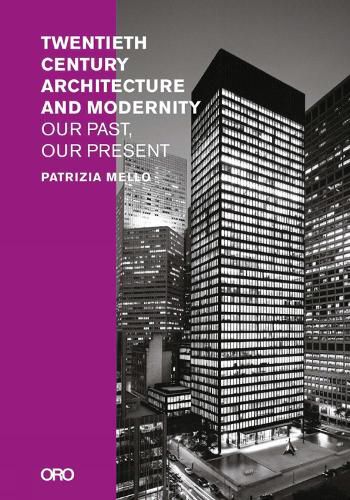Readings Newsletter
Become a Readings Member to make your shopping experience even easier.
Sign in or sign up for free!
You’re not far away from qualifying for FREE standard shipping within Australia
You’ve qualified for FREE standard shipping within Australia
The cart is loading…






The theme of modernity was the launching pad for architecture in the 20th century, to the point of completely revolutionizing our way of life. By causing in its development absolutizations and misunderstandings, actual motives linked to the profound desire to improve everyone’s life were reconsidered.
Against the theory that the 20th century connected the objective of modernity to that of the Modern Movement, this book deals with the theme of a present continuity by revealing those open visions that characterized modernity at the end of the 19th century. By critically reviewing the main stages of development over time-as well as the intense debates of architectural historians, architects, and contemporary scholars-through the thesis of modernity as tradition, research, and criticism, a concept of contradiction is supported. Further echoed by that of architecture tout court, enhancing the present environment in its current fragility of views-even more so today with the appearance of a virus capable of undermining our way of living. These are contemporary modernisms aimed at recovering the essence of a recent past to project it into the present, restoring to architecture that long-neglected role of critical construction and formation of society in an era, ultimately defined as of Rembrandt beauty.
$9.00 standard shipping within Australia
FREE standard shipping within Australia for orders over $100.00
Express & International shipping calculated at checkout
Stock availability can be subject to change without notice. We recommend calling the shop or contacting our online team to check availability of low stock items. Please see our Shopping Online page for more details.
The theme of modernity was the launching pad for architecture in the 20th century, to the point of completely revolutionizing our way of life. By causing in its development absolutizations and misunderstandings, actual motives linked to the profound desire to improve everyone’s life were reconsidered.
Against the theory that the 20th century connected the objective of modernity to that of the Modern Movement, this book deals with the theme of a present continuity by revealing those open visions that characterized modernity at the end of the 19th century. By critically reviewing the main stages of development over time-as well as the intense debates of architectural historians, architects, and contemporary scholars-through the thesis of modernity as tradition, research, and criticism, a concept of contradiction is supported. Further echoed by that of architecture tout court, enhancing the present environment in its current fragility of views-even more so today with the appearance of a virus capable of undermining our way of living. These are contemporary modernisms aimed at recovering the essence of a recent past to project it into the present, restoring to architecture that long-neglected role of critical construction and formation of society in an era, ultimately defined as of Rembrandt beauty.